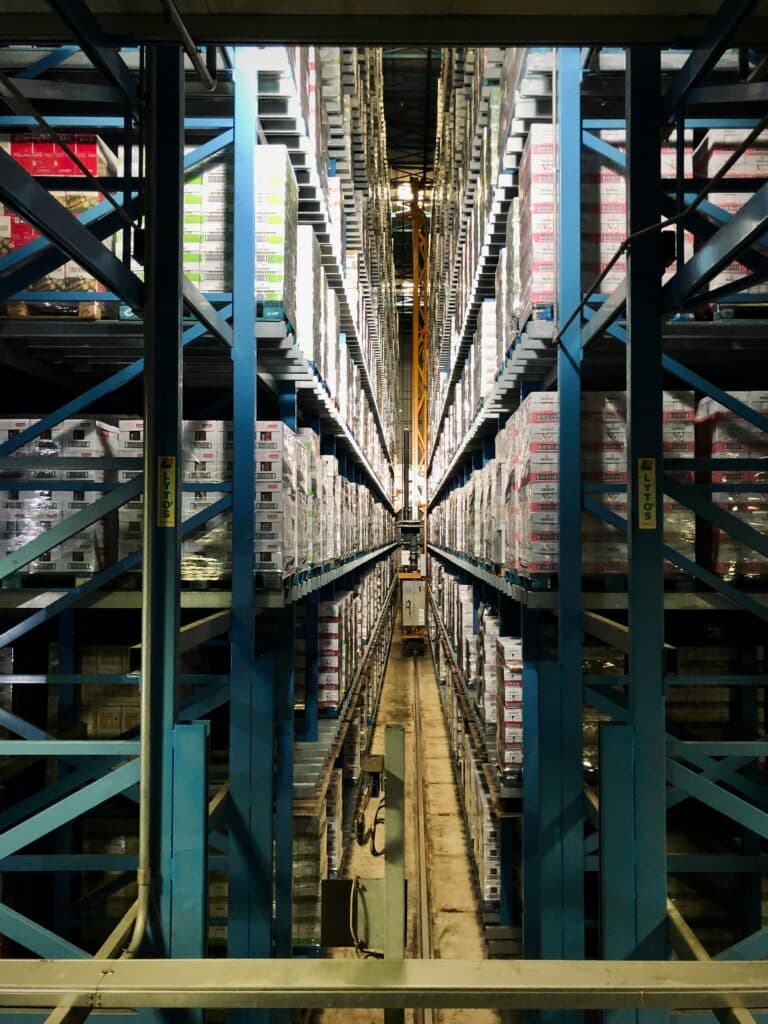Supply Chain Automation and Related Emerging Trends
No product exists that doesn’t have to first move through a supply chain to transform from raw materials to a consumer-ready item. Companies managing the supply chain for goods and services know all too well the importance of streamlining and optimizing supply chains to cut costs, boost profits, and improve customer satisfaction. Supply chain automation helps to accomplish smooth operations.
We’ll define what supply chain automation is, the key technologies involved, and the plenty of benefits that come along with implementing it.
What is Supply Chain Automation?
Supply chain automation is the application of digital technologies to connect various applications and processes within a company’s supply chain operations. As the term “automation” implies, supply chain automation doesn’t require human intervention.
Now more than ever, it’s critical for companies to optimize their operations given the immense competitive landscape, everchanging economic conditions, speed of the digital age, and labor shortages.
As we dive deeper into this glossary, we will explore the concepts connected to supply chain automation and what trends to expect moving forward.
Key Concepts in Supply Chain Automation
Let’s kick it off with key concepts and tools that are inherently related to supply chain automation.
They include:
Automated Material Handling Systems
Automated material handing systems (AMHS) are used in manufacturing to make sure that the transport of material from one place to another is efficient. In fully automated cases, the system is able to identify, route, and deliver material from its starting place to the tool that requires its use.
Warehouse Management Systems (WMS)
Warehouse management system is software to assist in daily warehouse operations, from arrival to fulfillment.
Transportation Management Systems (TMS)
A transportation management system (TMS) is technology to aid in the logistics of physically moving goods to ensure that shipments are compliant and include the necessary documentation.
Order Fulfillment Automation
Automated fulfillment automates the steps of ordering, packing, and shipping products to arrive in customer’s hands faster and accurately.
Inventory Management Automation
Wholesalers and retailers can leverage inventory management automation to track inventory in real-time and simplify workflows as it tracks orders, supplies, sales, and stock.
Benefits of Supply Chain Automation
When considering the management of your company’s supply chain, everyone would agree that preventing delays and mistakes is desirable. Supply chain automation can dramatically transform operations for the better by:
Increasing Efficiency and Productivity
By replacing the need for manual tasks, workers are able to expedite workflows and get more done in less time.
Reduction in Labor Costs and Human Errors
Supply chain automation is not meant to replace human workers. Instead, it is intended to augment their capabilities and reduce the time they spend handling repetitive and tedious duties to rather allocate their time towards high-level and value-add tasks. By adding supply chain automation, you can reduce labor costs and manual errors as your team members can get more done and make informed decisions.
Improved Accuracy and Inventory Visibility
Rather than having to guess what stage of the process any team member is currently working on, supply chain automation technologies grant visibility into workflows for better tracking, monitoring, and optimizing. Not only is this true for internal control, but it also allows customers to better track their orders for improved satisfaction.
Faster Order Processing and Fulfillment
With less key person dependencies and delays, orders can be processed and fulfilled on time, leading to better customer relationships and loyalty. This can also promote higher sales.
Challenges and Considerations in Supply Chain Automation
Supply chain automation isn’t always one-size-fits-all in terms of what technologies are worth implementing. Certain challenges and considerations arise in the process, so it’s best to be aware of them to plan and overcome them successfully.
Initial Implementation Costs
There’s no doubt budget plays a role in what kind of tools can be used within any business. But remember to weight the initial implementation costs against the myriad of benefits and cost savings that come along with supply chain automation.
Integration with Legacy Systems
It’s also imperative to select solutions that work well with your existing tech stack as you have valuable data and workflows that already move through these systems. For example, speech-enabled AI like aiOla works on existing devices and doesn’t disrupt any existing workflows.
Data Security and Cybersecurity Risks
Since your supply chain involves so much data and sensitive information, security is paramount. The good news is that the technologies involved are kept up-to-date with the latest and greatest security measures.
Workforce Adaptation and Training
Perhaps one of the most challenging aspects of any type of automation and new technology is to get your team onboard with using it. Workforce adaptation requires change management, intentional and continuous communication, and a mutual understanding of how the tools are meant to aid rather than replace human workers.
Emerging Trends and Technologies in Supply Chain Automation
While there are already a plethora of technologies and solutions to choose from when implementing supply chain automation, the future is bright when it comes to even more improvement. This is because of emerging and popular trends taking place, such as:
- Internet of Things (IoT): IoT refers to a neetwork of devices and systems that can exchange information with each other via the cloud in real-time. In terms of supply chains, this has empowered real-time tracking and monitoring.
- Blockchain: Blockchain technology stores records in a network connected by peer-to-peer nodes to create a shared ledger with immutable and secure transactions. For supply chains, this enables transparent and secure transaction records, with a single source of truth that is time-stamped, accurate, and always up-to-date.
- Predictive Analytics and AI: AI and predictive analytics leverages historical data to forecast what’s upcoming to optimize processes and support utmost agility when it comes to operations.
- Cloud-based Automation Platforms: Last but not least, cloud-based automation platforms make it possible for businesses to scale operations without sacrificing quality or speed.
Amazon Robots for Retail Automation
When you hear the word “Amazon,” you probably first think about the app and your latest order before the world’s largest rainforest ever crosses your mind. Amazon has become a verb, like Google, for a reason. And, when it comes to supply chain and order fulfillment, it’s easy to argue that no one does it better or more efficiently at such a great volume.
Supply chain automation is at the helm, enabling Amazon’s automated fulfillment centers. Amazon uses robots, such as its machine dubbed Proteus, to move bins filled with goods to trucks in its loading bay to hit the road for deliveries. Across its warehouses, robots by different names, are atuomating warehouse operations to increase efficiency and safety for workers. On average, Amazon receives 12.10 million orders per day, of which Amazon processes 140 global orders in an average second.
Closing Thoughts
When you take Amazon as an example, it’s clear to see that it wouldn’t be humanly possible to run an operation at that scale without technology and automation to assist. For businesses of any size, an automated supply chain results in increased efficiency, safety, visibility, and accuracy for employees and customers alike.




